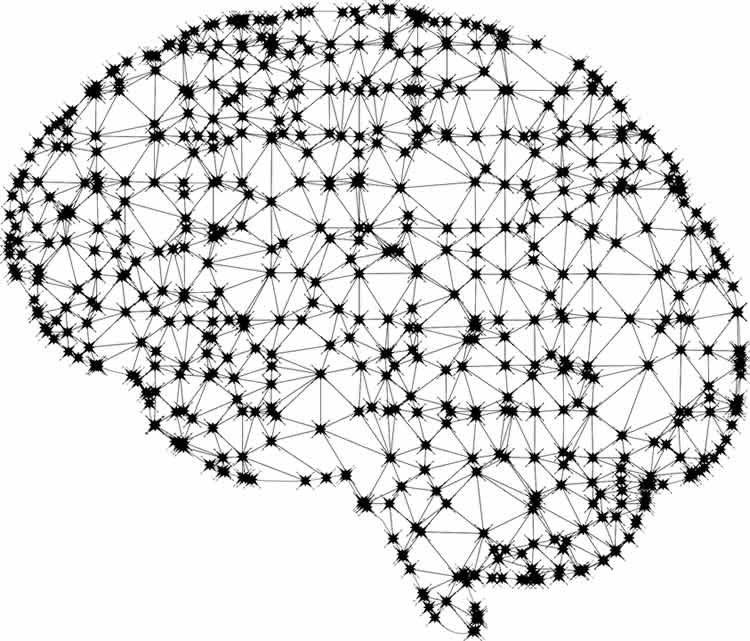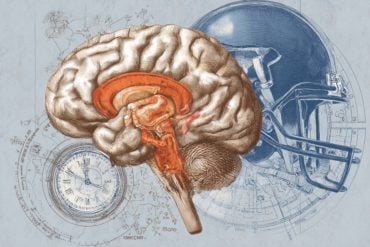Summary: Study confirms the spatial layout of brain networks is more pronounced in those with autism. Additionally, most of the variations in network location was identified in attention networks.
Source: CAMH.
A CAMH study analyzing more than 1,000 brain scans reveals surprising new insights into brain networks in people with autism, after applying a new personalized approach to brain mapping.
Autism is a complex, lifelong neurodevelopmental disorder that affects more than one in 100 people – so understanding these brain networks has potential to show how autism develops over time, and to identify new approaches to treatment.
“We know that autism is different across children, who don’t show the exact same impairments,” says Dr. Erin Dickie, a CAMH scientist in the Kimel Family Imaging-Genetics Translational Laboratory, and lead author of the study. “One explanation is that each may have slight differences in brain network functioning, despite having a common diagnosis.”
Among researchers, clinicians and families, there is also increasing awareness that there are probably different sub-types of autism, based on differences in brain biology, says co-author Dr. Stephanie Ameis, Clinician Scientist and autism expert in the Child, Youth and Emerging Adult Division and the Campbell Family Mental Health Research Institute at CAMH.
The new CAMH-developed approach, published in Biological Psychiatry, provides a way to examine the location of individual brain networks with more precision. A brain network connects different brain regions, sending signals across pathways for specific functions, such as vision or attention. Each network is located in roughly the same region in everyone’s brains.
The study confirmed that differences in the spatial layout of brain networks were more pronounced among people with autism than those without – in other words, the brains of two people with autism are different from each another, and this difference is larger than those measured in brains of two people without autism. In addition, the most variation in network location was found in the brain’s attention networks.
“We developed a new way of looking at how the brain is organized,” says Dr. Dickie. Using an approach called personalized intrinsic network topography (PINT), the team mapped the location of six brain networks by individual, to ensure more accuracy in showing where these networks exist, rather than relying on a template pointing to approximate locations. PINT was applied to functional MRI brain scans of people in “resting state,” not completing any tasks in the scanner.
Scientists previously suspected that there was “dis-connectivity,” or weaker long-range connections, between brain areas in those with autism. After personalized brain mapping was applied, this study showed that the evidence for dis-connectivity dropped. This suggests that brain networks related to attention in autism may not only be disconnected, but also displaced, says Dr. Dickie.
This new approach, which has been made publicly available, can now be used in studies of brain function in autism to account for network displacement.

“Recently, there have been high profile clinical trials for individuals with autism spectrum disorder, but these novel treatments have not shown any therapeutic effect,” says Dr. Ameis. “Part of the problem may be the variability in autism. This study underscores the importance of accounting for individual differences to develop innovative and personalized treatment approaches.”
The brain scans were accessed from the ABIDE network, (Autism Brain Imaging Data Exchange), enabling a large sample of 393 people with autism and 496 as a comparison group, ranging in age from eight to 55, as well as scans to test the reliability of the PINT approach.
Source: Sean O’Malley – CAMH
Publisher: Organized by NeuroscienceNews.com.
Image Source: NeuroscienceNews.com image is in the public domain.
Original Research: Abstract for “Personalized Intrinsic Network Topography Mapping and Functional Connectivity Deficits in Autism Spectrum Disorder” by Erin W. Dickie, Stephanie H. Ameis, Saba Shahab, Navona Calarco, Dawn E. Smith, Dayton Miranda, Joseph D. Viviano, and Aristotle N. Voineskos in Biological Psychology. Published March 17 2018.
doi:10.1016/j.biopsych.2018.02.1174
[cbtabs][cbtab title=”MLA”]CAMH “Study Shows Details of Brain Networks in Autism.” NeuroscienceNews. NeuroscienceNews, 14 May 2018.
<https://neurosciencenews.com/brain-networks-asd-9043/>.[/cbtab][cbtab title=”APA”]CAMH (2018, May 14). Study Shows Details of Brain Networks in Autism. NeuroscienceNews. Retrieved May 14, 2018 from https://neurosciencenews.com/brain-networks-asd-9043/[/cbtab][cbtab title=”Chicago”]CAMH “Study Shows Details of Brain Networks in Autism.” https://neurosciencenews.com/brain-networks-asd-9043/ (accessed May 14, 2018).[/cbtab][/cbtabs]
Abstract
Personalized Intrinsic Network Topography Mapping and Functional Connectivity Deficits in Autism Spectrum Disorder
Background
Recent advances in techniques using functional magnetic resonance imaging data demonstrate individually specific variation in brain architecture in healthy individuals. To our knowledge, the effects of individually specific variation in complex brain disorders have not been previously reported.
Methods
We developed a novel approach (Personalized Intrinsic Network Topography, PINT) for localizing individually specific resting-state networks using conventional resting-state functional magnetic resonance imaging scans. Using cross-sectional data from participants with autism spectrum disorder (ASD; n = 393) and typically developing (TD) control participants (n = 496) across 15 sites, we tested: 1) effect of diagnosis and age on the variability of intrinsic network locations and 2) whether prior findings of functional connectivity differences in persons with ASD compared with TD persons remain after PINT application.
Results
We found greater variability in the spatial locations of resting-state networks within individuals with ASD compared with those in TD individuals. For TD persons, variability decreased from childhood into adulthood and increased in late life, following a U-shaped pattern that was not present in those with ASD. Comparison of intrinsic connectivity between groups revealed that the application of PINT decreased the number of hypoconnected regions in ASD.
Conclusions
Our results provide a new framework for measuring altered brain functioning in neurodevelopmental disorders that may have implications for tracking developmental course, phenotypic heterogeneity, and ultimately treatment response. We underscore the importance of accounting for individual variation in the study of complex brain disorders.






